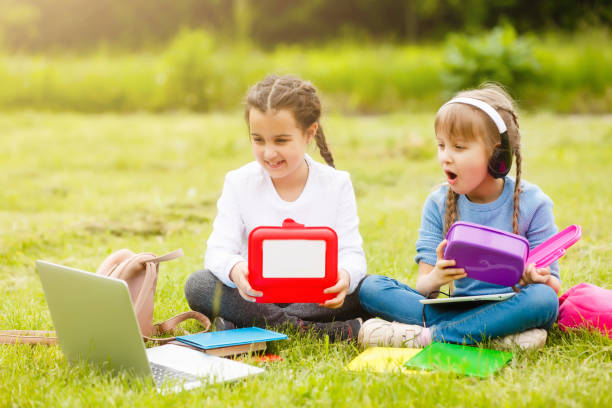Digital Literacy for Preschoolers: Early Introduction to Technology

In today’s rapidly evolving world, technology has become an integral part of our daily lives. Even young children are exposed to various forms of digital devices from an early age. As preschools seek to prepare children for the future, introducing digital literacy in a balanced way is crucial. Teaching preschoolers the basics of technology can set them up for success in a digital society, but this needs to be done thoughtfully to avoid overexposure and ensure holistic development.
The Importance of Digital Literacy
Digital literacy for preschoolers involves teaching them basic technology skills, such as using a computer mouse or touchscreen, navigating educational apps, and understanding online safety. These foundational skills help children feel comfortable with technology, which is a necessary component in many aspects of learning and daily life. More importantly, digital literacy teaches children how to use technology as a tool for creativity, collaboration, and learning, rather than solely for entertainment.
However, balance is key. Overexposure to screens can impact children’s social and emotional development, as well as their physical health, including eye strain and sedentary habits. A balanced approach to digital literacy ensures that children learn how to engage with technology purposefully, while also participating in hands-on activities, outdoor play, and face-to-face interactions that are equally vital to their development.
Strategies for Introducing Digital Literacy in Preschool
- Purposeful Screen Time: Not all screen time is created equal. In preschool settings, technology should be used for educational purposes that enhance learning. For example, teachers can use interactive apps to teach early math, reading, or science concepts. These apps should be age-appropriate, engaging, and designed to promote active participation rather than passive consumption. By making screen time purposeful, preschools can introduce technology in a way that complements traditional learning activities.
- Blended Learning Environments: A well-rounded approach to digital literacy involves blending digital activities with hands-on learning. For instance, teachers can use digital storytelling apps that allow children to create their own stories, combining creativity with technology. This can then be paired with offline activities like drawing or acting out the story, ensuring that children develop a variety of skills, both digital and non-digital.
- Tech-Free Zones and Time Limits: It’s essential to create tech-free zones and establish screen time limits in preschool environments to prevent overexposure. Children need plenty of time for unstructured play, physical activity, and social interaction. Preschools can designate specific times of the day for technology use and ensure that the rest of the day is focused on play, art, outdoor activities, and group learning. This helps children maintain a healthy balance between screen time and real-world experiences.
Preparing Preschoolers for the Digital Future
Incorporating digital literacy into preschool education is about more than just teaching technology skills. It’s about equipping children with the ability to use technology thoughtfully and responsibly. By introducing digital literacy in a balanced way, preschools can help children become comfortable with technology while ensuring that it enhances their development rather than detracts from it.
Through purposeful screen time, blended learning environments, and clear boundaries around technology use, preschools can give children the tools they need to thrive in the digital age—without sacrificing the critical social, emotional, and physical skills that come from unplugged play and interaction. As we look toward the future, fostering digital literacy in early childhood education will remain a vital part of preparing children for the world they will grow up in.

